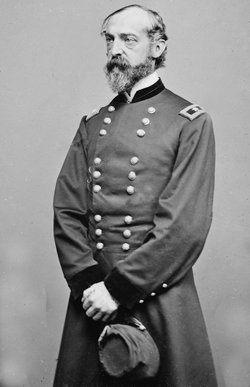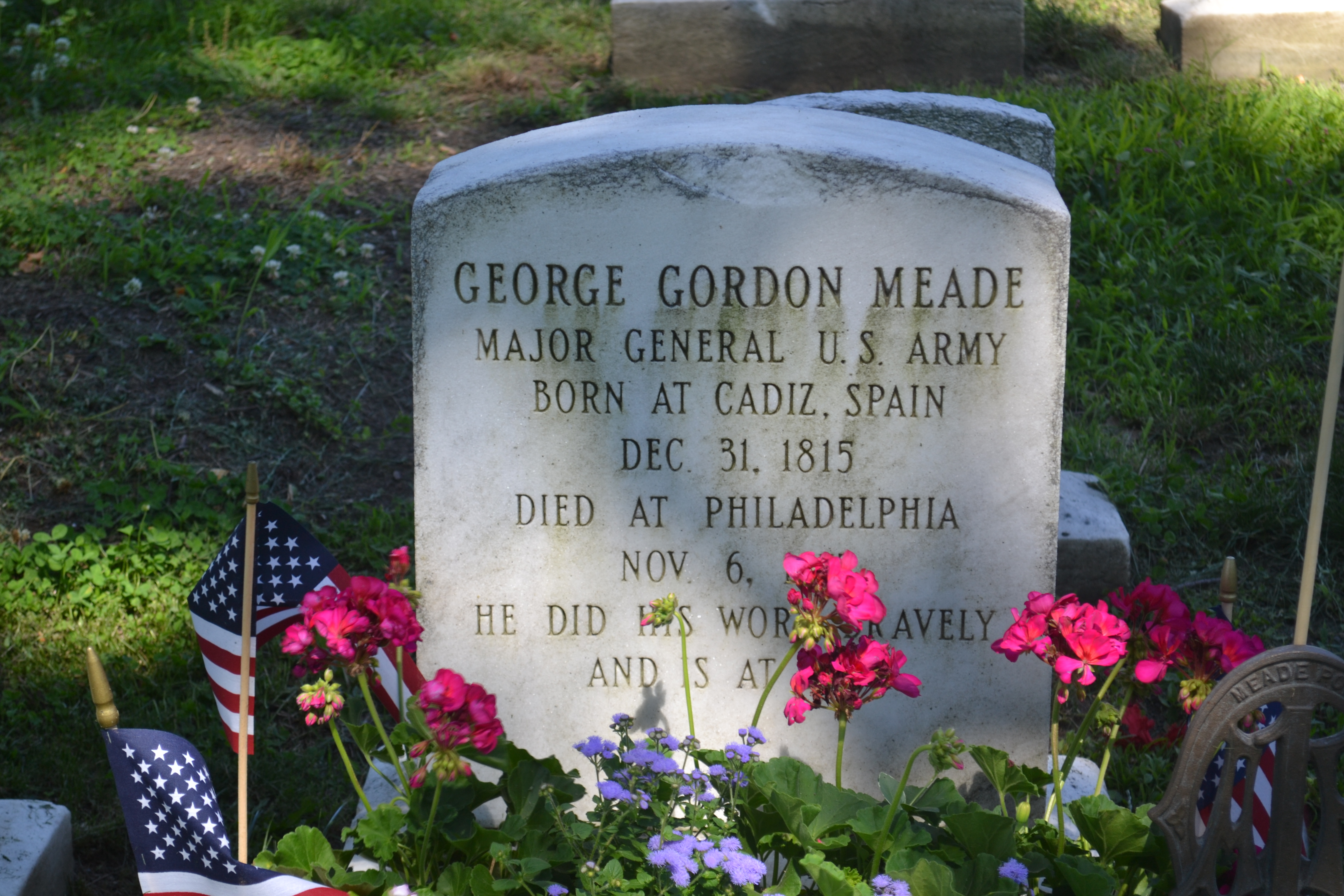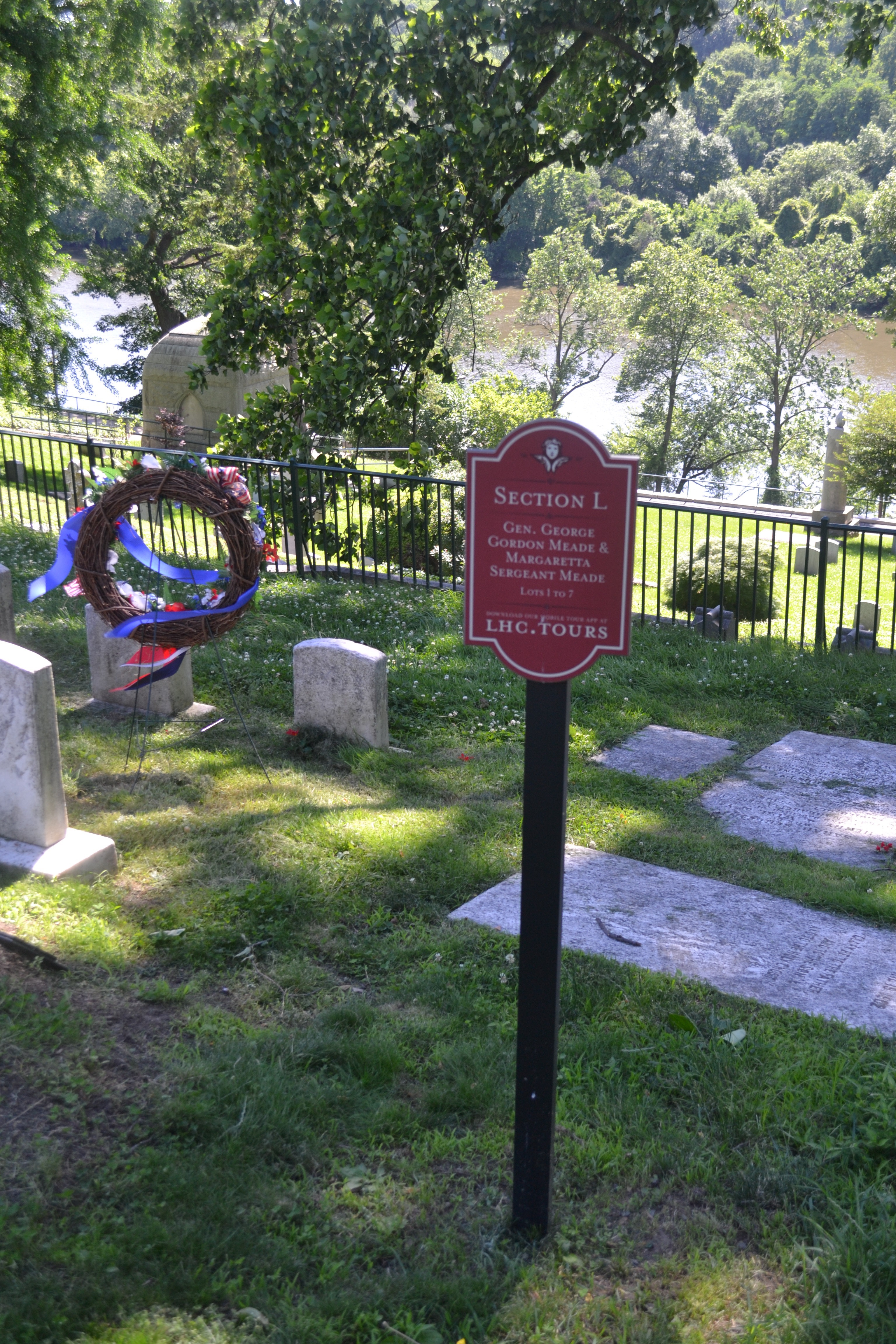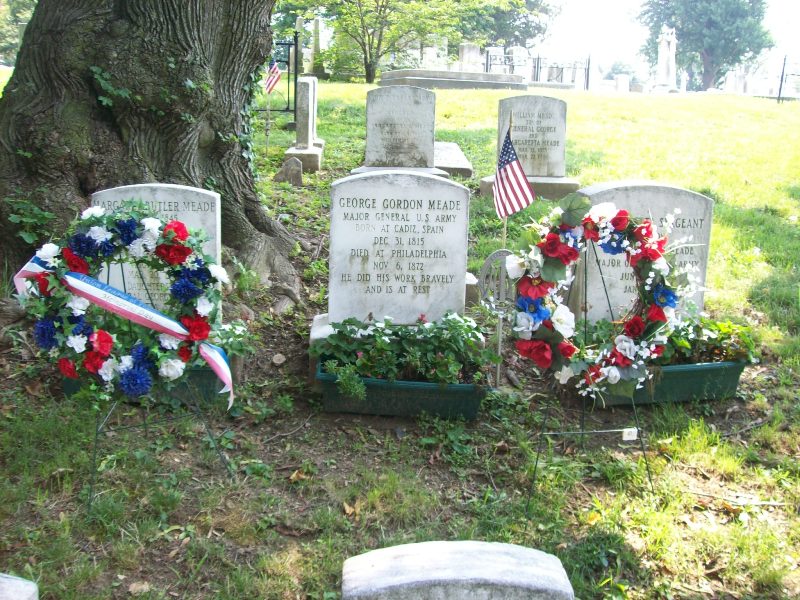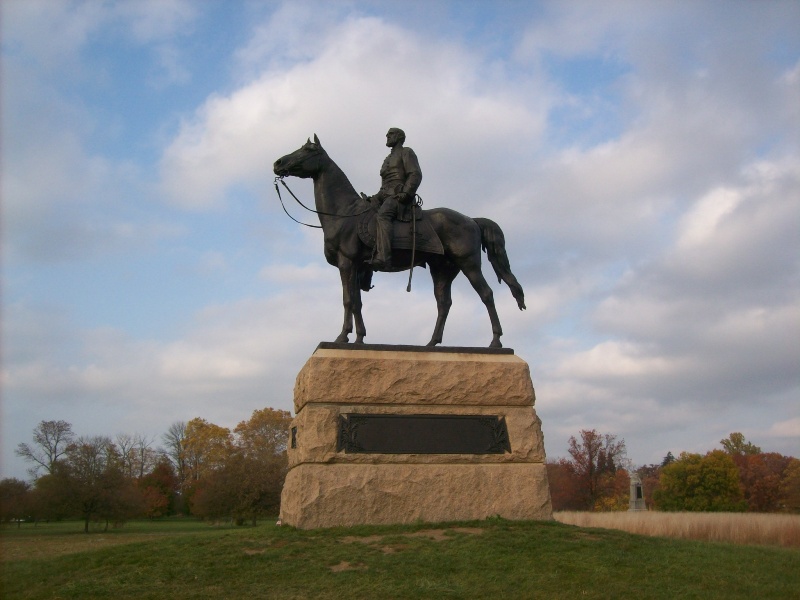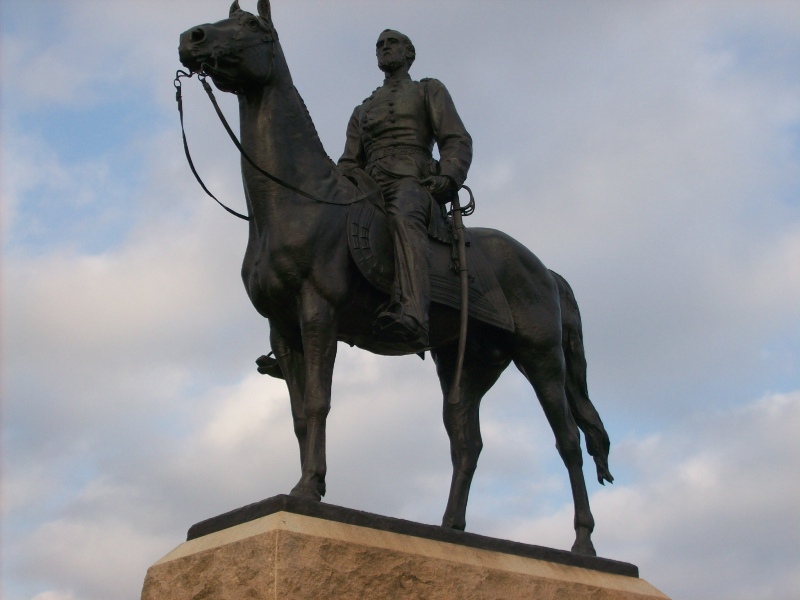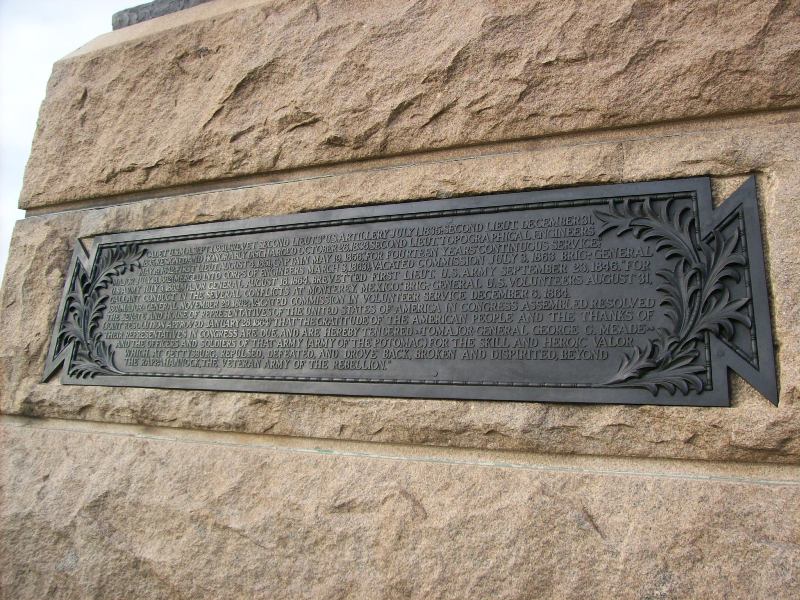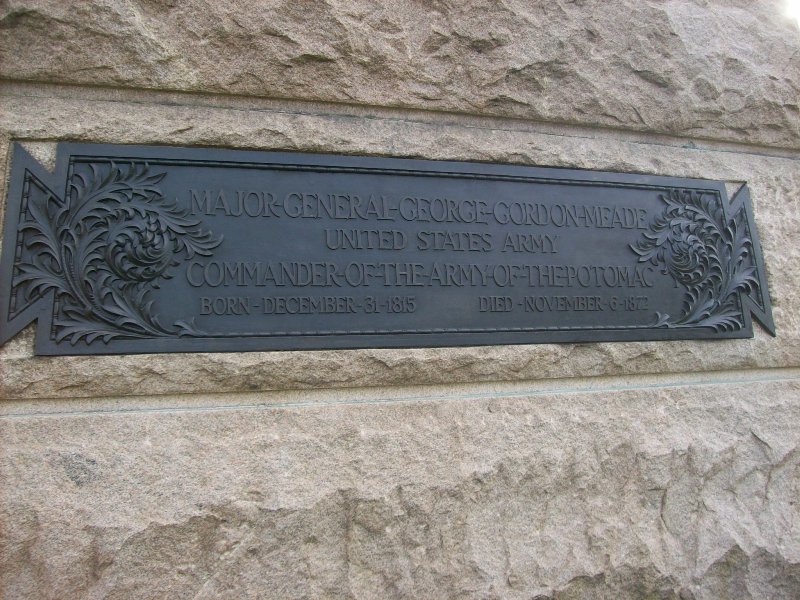Born in Cadiz, Spain, his father was stationed there as a United States Naval Agent at the time of his birth. He graduated from the United States Military Academy at West Point, New York, in 1835, placing 19th out of 56. He left the Army in 1836, and returned in 1842 as a 2nd Lieutenant in the Corps of Topographical Engineers.
Employed as a military engineer up to and including the Mexican War, he was present at the Battles of Palo Alto, Resaca de la Palma, and Monterrey. In the years between the Mexican and Civil War, he served in lighthouse construction projects and coastal surveys, and was promoted to Captain in 1856. From 1857 until 1861, he headed the Great Lakes Survey mission.
A few months after the Civil War started, he was called East, and promoted to Brigadier General of the United States Volunteers on August 31, 1861. Given command of a brigade of Pennsylvania Reserve troops, he led them in the 1862 Peninsular Campaign, and, during the Seven Days Battles, he was severely wounded at the Battle of Glendale on June 30, 1862.
After partially recovering, he commanded the brigade at the August 1862 Battle of Second Bull Run. Elevated to division commander, he commanded the I Corps' 3rd Division at the Battles of South Mountain, Antietam, and Fredericksburg, where his troops made a temporary breakthrough of the Confederate lines. Named Commander of the Army of the Potomac's V Corps a few days after the battle, he was promoted to Major General, United States Volunteers on November 29, 1862.
He led his Corps at the Battle of Chancellorsville, where he successfully executed the strategic crossing of the Rappahannock River, only to have his and the Army's efforts squandered by General Joseph Hooker's timidity once the battle started. He received orders to replace Hooker as commander of the Army of the Potomac on June 28, 1863.
Just a few days later, the Army of the Potomac was involved in the monumental Battle of Gettysburg. General Meade arrived on the scene the night of July 1, and made the critical decision to stay and continue the fight. The Confederate forces were subsequently defeated after two more days and the Battle of Gettysburg has been argued to be the turning point of the Civil War. General Meade himself was roundly criticized then and now for not pursuing the defeated Confederate forces after the battle.
The only further significant decision for the Army of the Potomac made by General Meade was the aborted Mine Run Campaign in the fall of 1863. When Ulysses S. Grant was named Lieutenant General and Commander of all Union Army forces, he had his headquarters with the Army of the Potomac and directed Army strategy and operations against General Robert E. Lee. General Meade retained full command of the Army, although strategic decisions were made by Grant.
He led the Army in all of the battles from the Wilderness right up until the surrender at Appomattox Court House, received the thanks of Congress for his Gettysburg efforts, and ended the war as Major General in the Regular Army.
Named commander of the Military Division of the Atlantic, he made his headquarters in his hometown of Philadelphia, Pennsylvania, where he would involve himself in civic endeavors, including the creation of the city's Fairmount Park. He died while still on active duty at his residence on Delancey Street in Philadelphia. His elaborate funeral was attended by President Grant, Generals William T. Sherman, Philip Sheridan, Irwin McDowell, and many other Civil War figures. His son, George Jr., served as his aide during the Battle of Gettysburg.
Today on Cemetery Ridge in the Gettysburg National Military Park stands a huge equestrian sculpture of General Meade, and a similar statue stands in his honor in West Fairmount Park in Philadelphia. The United States Army's Fort Meade in Maryland is named for him. His legacy is commemorated today by the General Meade Society of Philadelphia.
Born in Cadiz, Spain, his father was stationed there as a United States Naval Agent at the time of his birth. He graduated from the United States Military Academy at West Point, New York, in 1835, placing 19th out of 56. He left the Army in 1836, and returned in 1842 as a 2nd Lieutenant in the Corps of Topographical Engineers.
Employed as a military engineer up to and including the Mexican War, he was present at the Battles of Palo Alto, Resaca de la Palma, and Monterrey. In the years between the Mexican and Civil War, he served in lighthouse construction projects and coastal surveys, and was promoted to Captain in 1856. From 1857 until 1861, he headed the Great Lakes Survey mission.
A few months after the Civil War started, he was called East, and promoted to Brigadier General of the United States Volunteers on August 31, 1861. Given command of a brigade of Pennsylvania Reserve troops, he led them in the 1862 Peninsular Campaign, and, during the Seven Days Battles, he was severely wounded at the Battle of Glendale on June 30, 1862.
After partially recovering, he commanded the brigade at the August 1862 Battle of Second Bull Run. Elevated to division commander, he commanded the I Corps' 3rd Division at the Battles of South Mountain, Antietam, and Fredericksburg, where his troops made a temporary breakthrough of the Confederate lines. Named Commander of the Army of the Potomac's V Corps a few days after the battle, he was promoted to Major General, United States Volunteers on November 29, 1862.
He led his Corps at the Battle of Chancellorsville, where he successfully executed the strategic crossing of the Rappahannock River, only to have his and the Army's efforts squandered by General Joseph Hooker's timidity once the battle started. He received orders to replace Hooker as commander of the Army of the Potomac on June 28, 1863.
Just a few days later, the Army of the Potomac was involved in the monumental Battle of Gettysburg. General Meade arrived on the scene the night of July 1, and made the critical decision to stay and continue the fight. The Confederate forces were subsequently defeated after two more days and the Battle of Gettysburg has been argued to be the turning point of the Civil War. General Meade himself was roundly criticized then and now for not pursuing the defeated Confederate forces after the battle.
The only further significant decision for the Army of the Potomac made by General Meade was the aborted Mine Run Campaign in the fall of 1863. When Ulysses S. Grant was named Lieutenant General and Commander of all Union Army forces, he had his headquarters with the Army of the Potomac and directed Army strategy and operations against General Robert E. Lee. General Meade retained full command of the Army, although strategic decisions were made by Grant.
He led the Army in all of the battles from the Wilderness right up until the surrender at Appomattox Court House, received the thanks of Congress for his Gettysburg efforts, and ended the war as Major General in the Regular Army.
Named commander of the Military Division of the Atlantic, he made his headquarters in his hometown of Philadelphia, Pennsylvania, where he would involve himself in civic endeavors, including the creation of the city's Fairmount Park. He died while still on active duty at his residence on Delancey Street in Philadelphia. His elaborate funeral was attended by President Grant, Generals William T. Sherman, Philip Sheridan, Irwin McDowell, and many other Civil War figures. His son, George Jr., served as his aide during the Battle of Gettysburg.
Today on Cemetery Ridge in the Gettysburg National Military Park stands a huge equestrian sculpture of General Meade, and a similar statue stands in his honor in West Fairmount Park in Philadelphia. The United States Army's Fort Meade in Maryland is named for him. His legacy is commemorated today by the General Meade Society of Philadelphia.
Bio by: RPD2
Inscription
MAJOR GENERAL U.S. ARMY
HE DID HIS WORK BRAVELY AND IS AT REST
Family Members
-
Henrietta Constantia Meade Dallas
1801–1831
-
![]()
Charlotte Hustler Meade Graham
1803–1843
-
![]()
Elizabeth Mary Meade Ingraham
1805–1872
-
![]()
Capt Richard Worsam Meade
1807–1870
-
![]()
Margaret Gordon Meade
1808–1887
-
![]()
Maria Del Carmen Meade Bache
1810–1877
-
![]()
Salvadora Meade Paterson
1812–1886
-
![]()
Robert Leamy Meade
1817–1841
-
Infant Daughter Meade
1821–1821
-
![]()
Marianne M. Meade Huger
1823–1857
Advertisement
See more Meade memorials in:
Explore more
Sponsored by Ancestry
Advertisement
